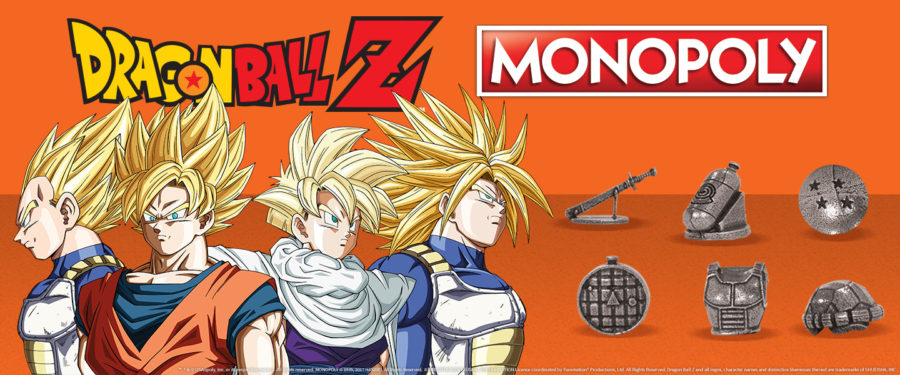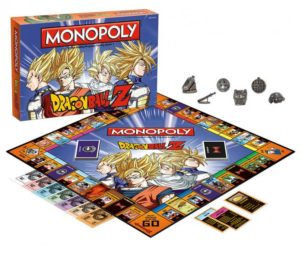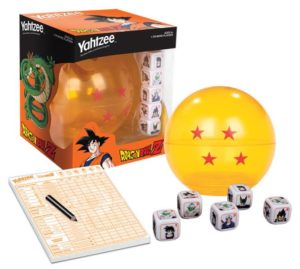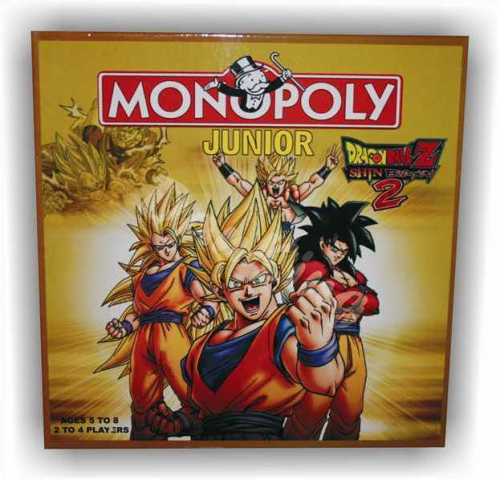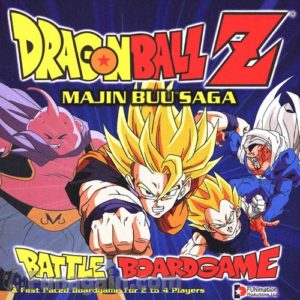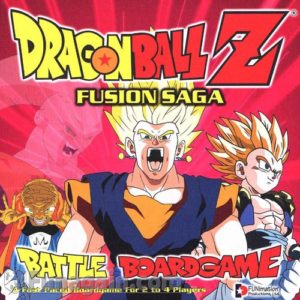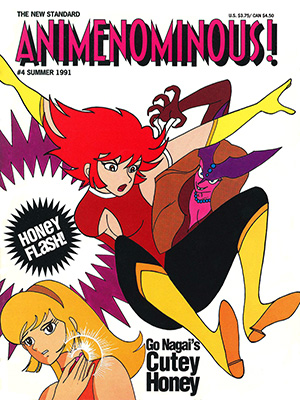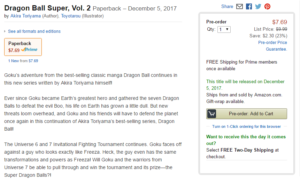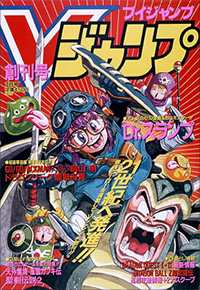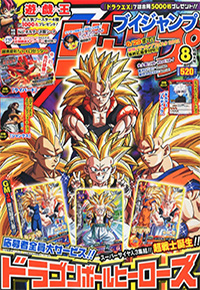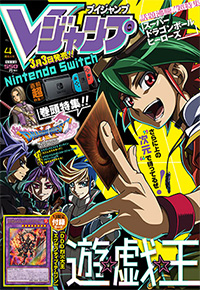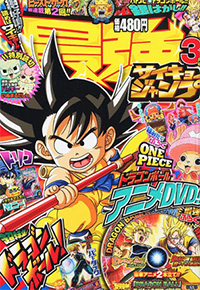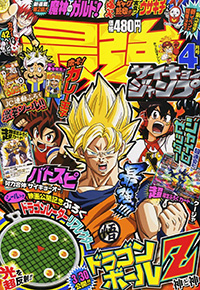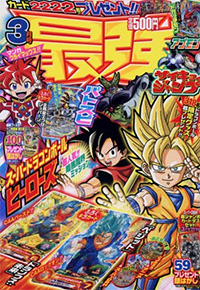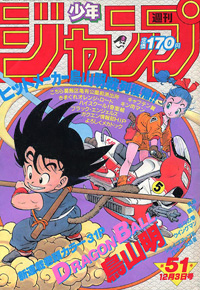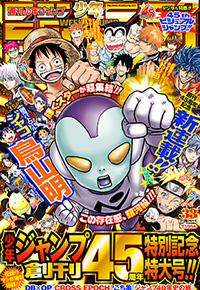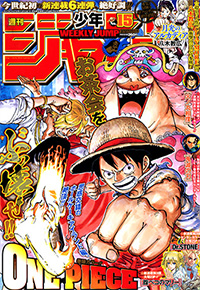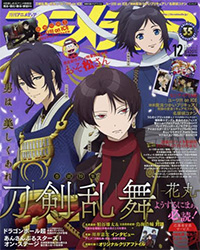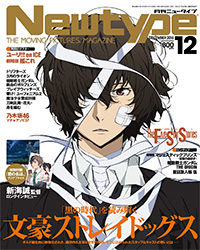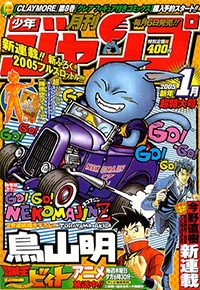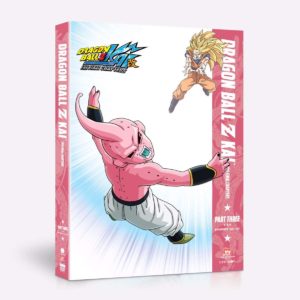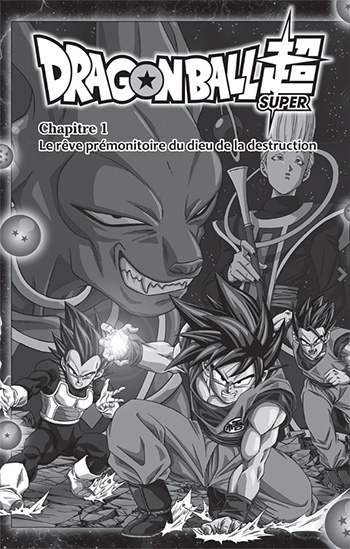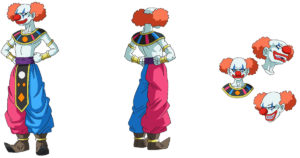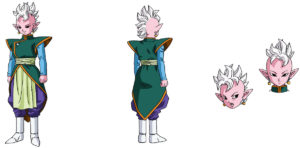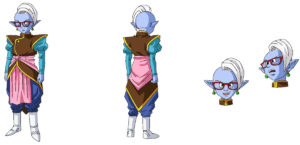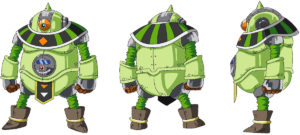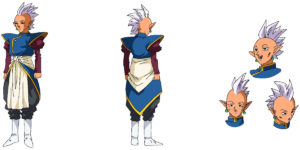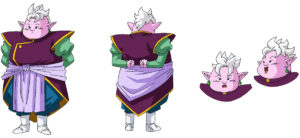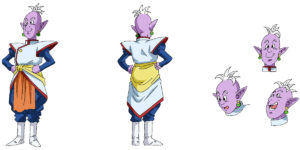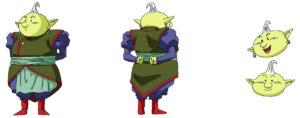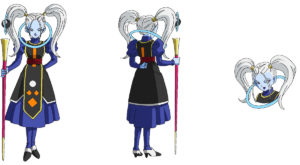On the cusp of yet another monthly Dragon Ball Super manga chapter release, we start to see the following question pop up repeatedly within our own community and abroad: “When does V-Jump come out?”
The answer is set in stone and has not changed for years, but as new fans come in and as Dragon Ball Super‘s production continues its odd storytelling split between the television series and the printed page — not to mention the continued struggle with piracy and leaks — we understand how people might be confused. Here is a brief overview of the most relevant publications, their release dates, and their content:
- V-Jump: Shueisha’s multimedia-focused magazine. Generally released on the 21st of each month. Dragon Ball coverage includes multi-page color spreads on current video games (console, mobile, and arcade), spin-off manga series (e.g., Dragon Ball Heroes: Victory Mission, Dragon Ball Super, etc.), the occasional interview, etc.
- Saikyō Jump: Shueisha’s younger-child-focused spin-off magazine. Released for the first weekend of every other month. Dragon Ball coverage includes short news recaps and longer-term promotions, along with various spin-off manga series (e.g., Dragon Ball SD, Dragon Ball Fusions the MANGA!!, Super Dragon Ball Heroes: Dark Demon Realm Mission, etc.).
- Weekly Shōnen Jump: Shueisha’s main, weekly manga anthology aimed at young boys (and is the publication where Dragon Ball was originally serialized). Released each Monday. Contemporary — but sporadic — Dragon Ball content includes weekly Dragon Ball Super episode promotions, short video game news recaps, and the occasional interview.
- Miscellaneous Anime Magazines: Animage, Animedia, and Newtype are the most popular, and are generally released on the 10th of each month. Contemporary Dragon Ball content includes upcoming Dragon Ball Super episode staff and summaries, along with the occasional brief feature or interview.
For those interested in learning more, read on!
V-Jump
V-Jump (ブイジャンプ or Vジャンプ, née “Virtual Jump”) is Shueisha’s multimedia-focused magazine. Its primary coverage is that of video games from its partners and advertisers (everything from console to mobile to arcade games); for Dragon Ball, this is generally multi-page color spreads near the beginning of the issue. V-Jump‘s coverage does also extend to the occasional interview and feature on a series independent of game content. Most notably right now, this includes the serialization of Toyotarō’s Dragon Ball Super “comicalization”. Previous Dragon Ball manga within V-Jump has included Toyotarō’s own three-part Resurrection ‘F’ introductory manga in 2015, and before that, his Dragon Ball Heroes: Victory Mission series from 2012-2015. Naho Ooishi’s Episode of Bardock manga ran in the August, September, and October 2011 issues of the magazine. Victory Mission was not even the first card-based spin-off manga for Dragon Ball within V-Jump‘s pages! Hobby Warrior: Burn On, Bui! (story by Mitsuru Misaki and art by Ryūji Tsugihara) was published in the magazine’s original trial run between 1990 and 1991, following the title character (“Bui” for “V”) as he partakes in Carddass battles.
Previous non-manga, promotional content included items such as the January 2017 issue’s “Dragon Ball Super Rivals Super Biographies” and the March 2013 issue’s “Akira Toriyama Special Interview“.
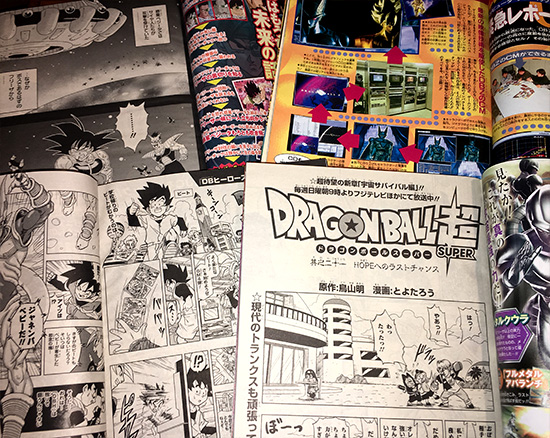
V-Jump is released on the 21st of each month, barring a Sunday or a holiday, in which case it gets moved up a day (or two, in the case that Monday is a holiday). There are very rare deviations to this schedule; for example, the February 2017 issue of V-Jump was released 17 December 2016 to coincide with that weekend’s Jump Festa in Tokyo (where more details on Dragon Ball Super‘s “Universe Survival arc” were set to debut). Issues are dated ahead by two months; for example, the May 2017 issue hits store shelves 21 March 2017.
As an aside, Viz is currently releasing free, English-translated Dragon Ball Super manga chapters digitally on their website. Chapters are released Fridays on a biweekly basis. As of this article’s publication, Viz is currently one chapter behind, and is expected to catch up next month. We do not yet know how their schedule will continue (if at all) once they reach this point.
These days V-Jump runs in the ¥500-600 range (roughly $5-6). With shipping from Amazon Japan to most regions within the continental United States, a single issue will run you $15-16. This is roughly the same markup you would pay at a local, stateside Kinokuniya or other Japanese book store. Like most magazines, V-Jump is a first-come, first-served, available-until-gone sort of production. There have been rare cases of reprints to keep circulation afloat, but in general, those looking to purchase an upcoming issue are best served by pre-ordering (Amazon Japan / CDJapan).
Other than short digital availability time frames for Dragon Ball Heroes: Victory Mission and the Resurrection ‘F’ manga, as well as a special Episode of Bardock pack-in with Saikyō Jump, the Dragon Ball Super manga is the only Dragon Ball-related V-Jump series currently receiving collected editions (print/digital).
Worth noting: Akira Toriyama’s original editor, Kazuhiko Torishima, served as V-Jump‘s Editor in Chief for several years following its debut.
Saikyō Jump
Saikyō Jump (最強ジャンプ) is Shueisha’s younger-child-focused spin-off magazine. Its main content focus is “chibi” or “SD” (childish, “super deformed”, exaggerated) stories featuring popular series such as Dragon Ball, Naruto, and One Piece. Due to the longer timespan between issues compared to V-Jump, Saikyō Jump‘s promotional coverage tends to be short recaps of information already made available elsewhere, or brief summaries for a month’s worth of upcoming content. The magazine began as a quarterly publication with four total issues in 2011. The magazine switched to a monthly format in 2012, and switched again to a bimonthly (every other month) release schedule in late-2014.
In the beginning, Dragon Ball content was limited to just Dragon Ball SD, but as-of-late this has expanded to no less than five related series:
- Dragon Ball SD: A re-telling of the original series in “super deformed” style. Began in the four quarterly issues by skipping around to various points in the series, but switched to a total re-telling beginning with the magazine’s monthly format switch. This has otherwise remained the same since then, barring its original training arc and time-skip to the Saiyan arc. By Naho Ooishi; has appeared in every issue except the January 2017 issue.
- Dragon Ball GT Anime Comic: Takes screen shots from the Dragon Ball GT television series and arranges them into manga format (“animanga”). Began with the Evil Dragons arc to tie-in with the (then-contemporary) Dragon Ball GT content in the Dragon Ball Heroes arcade game. Began in the January 2014 issue.
- Dragon Ball Fusions the MANGA!!: Tells the story of Tekka and Pinich from the Nintendo 3DS game Dragon Ball Fusions as the kids fall into a mixed-up time/space Dragon World. By Hiroshi Otoki; began in the May 2016 issue.
- Super Dragon Ball Heroes: Dark Demon Realm Mission: Initially replacing the previous Dragon Ball Heroes Super Charisma Mission! series, tells a story using the new Super Dragon Ball Heroes characters and mission sets as a basis. By Yoshitaka Nagayama; began in the September 2016 issue.
- Super Dragon Ball Heroes: Ultimate Charisma Mission!!: A revival of the previous Charisma Mission series (which debuted with a special Rookie Charisma Mission Episode 0 in the December 2013 issue, then ran in earnest from the July 2014 to July 2016 issues). Engineer Yoshito, Battle Navigator Tsubasa, and Battle Princess Momo illustrate the various features of the game in comedic ways. By Yoshitaka Nagayama; began in the March 2017 issue.
Unlike Charisma Mission which received a replacement and later official continuation, one Dragon Ball spin-off series has since been phased out entirely after an 11-chapter run: Dragon Ball Discross Divine Power God MAX!! by Katsuki Hirose, which began in the March 2015 issue. This was yet another spin-off series with heroes using the various Dragon World characters and transformations in conjunction with the (now discontinued) Dragon Ball Discross physical arcade game. The chapter’s final page in the November 2016 issue stated, promoting the author’s shift to a new Digimon comic in the same issue:
The Discross battle continues! Thank you for all your support up till now! The author’s next work begins on page 354!
Saikyō Jump has also been known to include bonus chapters of its regular series as well as V-Jump regulars; the July 2014 issue, for example, featured three additional bonus chapters by various artists. The magazine has occasionally included miscellaneous chapter reprints in addition to its standard series. Neko Majin Z‘s first chapter was reprinted in the November 2014 issue followed by the remaining Z chapters one at a time in the next four issues. The first Episode of Bardock chapter was reprinted in the magazine’s third 2011 quarterly issue.
Previous non-manga, promotional content included items such as the June 2014 issue’s “Twel-Boo Mysteries” Q&A session with Akira Toriyama and the March 2014 issue’s “Akira Toriyama Super Q&A“. The March 2012 issue came packed with a bonus DVD containing the Episode of Bardock and Plan to Eradicate the Super Saiyans special features. Each issue generally comes packed with Dragon Ball Heroes cards, a fold-out poster, and other miscellaneous trinkets.
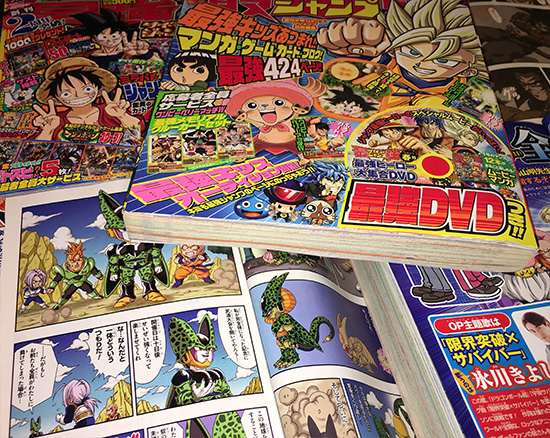
Saikyō Jump is currently released in time for the first weekend of every other month, starting with that year’s January issue releasing in the previous December; for example, the January 2017 issue was released 02 December 2016.
The magazine runs in the ¥400-600 range (roughly $4-6). With shipping from Amazon Japan to most regions within the continental United States, a single issue will run you $15-16. This is roughly the same markup you would pay at a local, stateside Kinokuniya or other Japanese book store. Like most magazines, Saikyō Jump is a first-come, first-served, available-until-gone sort of production. In general, those looking to purchase an upcoming issue are best served by pre-ordering (Amazon Japan / CDJapan).
Dragon Ball SD is the only Dragon Ball-related Saikyō Jump series receiving a collected edition (print/digital), though its first four quarterly chapters were not included.
Weekly Shōnen Jump
Weekly Shōnen Jump (週刊少年ジャンプ) is Shueisha’s main, weekly manga anthology aimed at young boys, and is the publication where Dragon Ball was originally serialized. It is released each Monday in Japan (barring the same holiday schedule as other magazines), with a double-issue for breaks such as New Year’s, Golden Week, Bon Festival, and Christmas. Issues are also forward dated a few weeks; for example, the 2017 #16 issue will hit store shelves 20 March 2017.
These days, Dragon Ball content is generally limited to weekly promotions for upcoming Dragon Ball Super episodes, and the occasional video game preview. Jaco the Galactic Patrolman was serialized in the magazine in 2013.
Previous non-manga, promotional content included items such as the 2013 #14-20 issues’ “Super Long Interview!! Please Tell Us, Akira Toriyama-sensei!!”
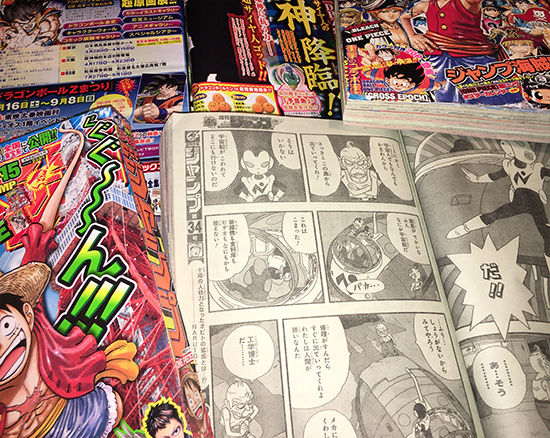
The magazine runs in the ¥200-300 range (roughly $2-3). Fewer online retailers stock this weekly publication, as its size and cheap paper quality are intended to make it an ephemeral, toss-away product while the individual series’ collected editions are the ones intended for long-term archival.
Other Anime Magazines
Of the various magazines out there, Animage, Animedia, and Newtype are the most popular; these are all generally released on the 10th of each month. These magazines all run in the ¥700-900 range (roughly $7-9). Like Shueisha’s publications, these magazines sell out quickly and should be pre-ordered if you are interested in a particular issue.
While not released by Shueisha themselves, these other anime magazines — particularly when a Dragon Ball series is actually airing on television — occasionally have related promotional content. These days it tends to be summaries and staff listings for upcoming Dragon Ball Super episodes, but in the past included countdowns/lists, interviews, and other special features.
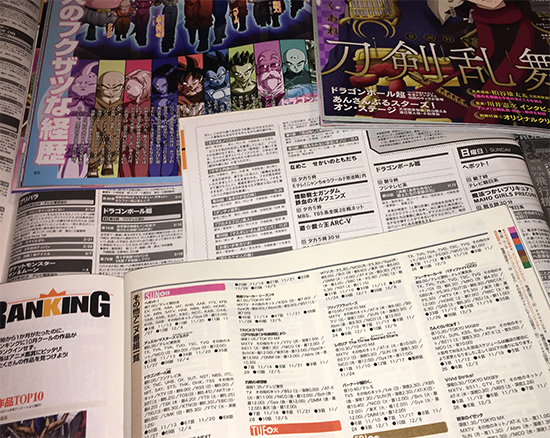
These magazines likewise tend to sell out quickly and should be pre-ordered if a particular issue is desired.
Related and Defunct Shueisha Magazines
While these magazines are not directly related to Dragon Ball, you may see them brought up from time-to-time.
Monthly Shōnen Jump (月刊少年ジャンプ) ran from 1970 to 2007 featuring series such as Claymore, Beet the Vandel Buster, Zenki, and Kekko Kamen. Akira Toriyama’s parody/spin-off series Neko Majin debuted in the magazine for several of its chapters, while other chapters were later reprinted in Monthly Shōnen Jump following their debut in other publications such as Weekly Shōnen Jump.
Jump SQ (ジャンプスクエア or “Jump Square”) served as a semi-replacement for Monthly Shōnen Jump and is aimed at a slightly older audience than Weekly Shōnen Jump. Akira Toriyama and Masakazu Katsura’s first “Galactic Patrol” series, Sachie-chan GOOD!!, appeared in the magazine’s inaugural May 2008 issue.
Weekly Young Jump (週刊ヤングジャンプ) began in 1979 as Shueisha’s seinen (adolescent boys) manga anthology. Akira Toriyama and Masakazu Katsura’s second “Galactic Patrol” series, Jiya, appeared in the magazine in 2010.
Hopefully we have taken a simple question, expanded it in a very long and convoluted way, and brought it back around again to something a bit more understandable!













